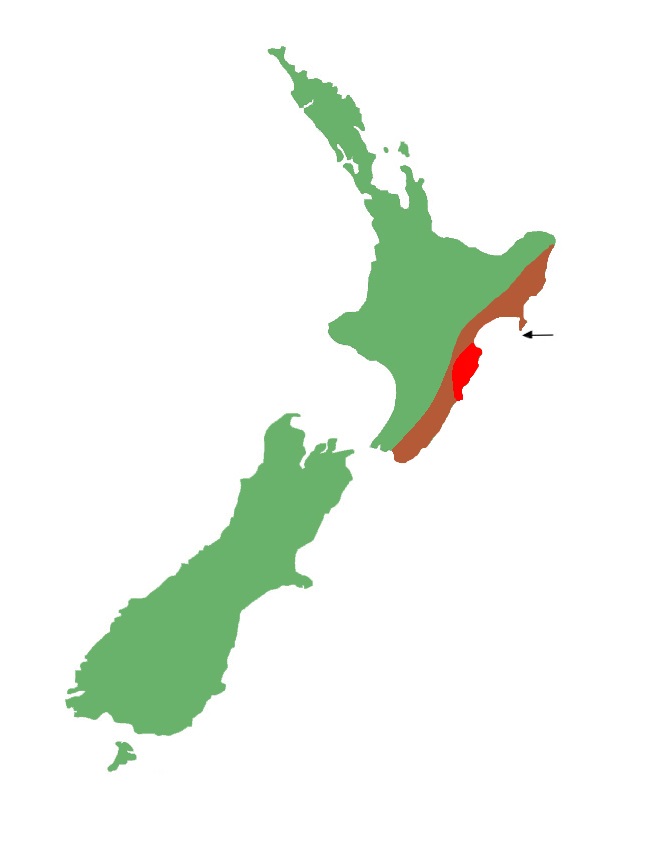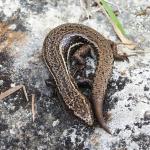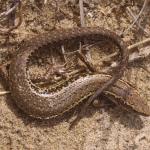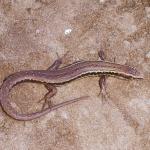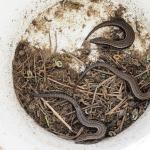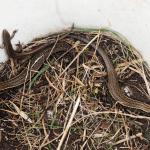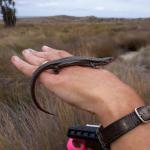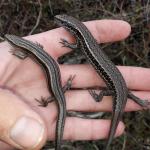- Home
- Herpetofauna Index
- Native
- Oligosoma Auroraense
Oligosoma auroraense
Hawke's Bay skink
Oligosoma auroraense
(Melzer et al., 2019)
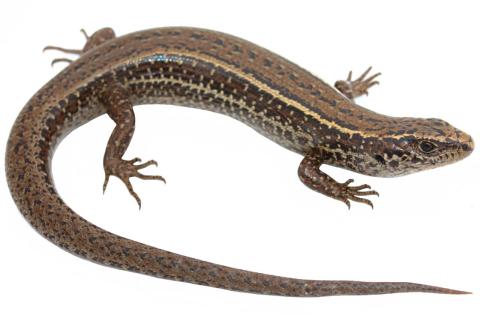
Length: SVL up to 100mm, with the tail being longer than the body length
Weight: up to 23 grams
Description
A beautiful, and robust species belonging to the speckled skink complex, Hawke's Bay skinks along with several other species in the speckled skink complex are amongst the largest skink species that still survive on the North Island mainland (at around 90mm SVL).
Hawke's Bay skinks are light to dark-brown dorsally with black and cream speckling, they often exhibit a dark dorsal stripe, but this may be absent or broken in some individuals. Dark brown lateral stripes with interior cream flecking are present, these are directly bordered by cream-coloured dorsolateral stripes, with the lower stripe breaking up into brown and cream blotching towards the lower surfaces. The lower surfaces are cream to pale yellow with dark brown to black flecking. Melanistic specimens have been recorded appearing dark grey or blue-grey in colouration.
Hawke's Bay skinks are distinctively patterned and only likely to be confused with the often much smaller northern grass skink (Oligosoma polychroma) with which it co-occurs. Young animals may be confused, but in general Hawke's Bay skink are much larger / more robust, and exhibit more distinct speckling on the dorsal surfaces.
Life expectancy
Unknown
Distribution
Until recently this species was thought to be restricted to the Cape Kidnappers area in central Hawke's Bay, however, the discovery of three additional populations from northern, inland, and southern Hawke's Bay have greatly extended their known range. It is likely that additional populations may also occur in Gisborne, and eastern parts of the Manawatu-Wanganui, and Wellington regions.
Ecology and habitat
Hawke's Bay skinks are diurnal and strongly heliothermic. They will sunbask, but often cryptically near cover.
They occur in a range of habitats including dune systems, shrubland, scrub, pasture, and the edges of coastal forest. When not active, foraging or basking, Hawke's Bay skinks take refuge on the ground under rocks, logs, driftwood, or in dense vegetation. They are known to reach densities of 880-990 per hectare in exotic grassland (Dent, 2016).
Social structure
Little is known about the social structure of Hawke's Bay skinks, though they are considered to be solitary.
Breeding biology
Largely unknown, but they may be similar to other members of the speckled skink complex e.g. gravid during spring-summer, and give birth from December to March.
Diet
The diet of Hawke's Bay skinks includes a wide range of invertebrates, and the berries / fruit of native species.
Disease
Unknown
Conservation strategy
Hawke's Bay skinks are currently regarded as Threatened - Nationally Endangered, however, this is likely to change given the discovery of multiple populations across the Hawke's Bay region.
They currently occur at two pest-controlled sites; Cape Sanctuary (Cape Kidnappers), which is enclosed by a pest-proof fence, although they are still exposed to mouse predation within, as well as Waikawa / Portland Island (although the identity of these animals has not been confirmed). It is possible that an additional population may occur on Te-Motu-o-Kura / Bare Island.
Interesting notes
Hawke's Bay skinks are members of the speckled skink cryptic species complex - a group of related taxa with similar morphology that were previously regarded as one highly variable species (Oligosoma infrapunctatum).
References
Hitchmough, R.A., Barr, B., Lettink, M., Monks, J., Reardon, J., Tocher, M., van Winkel, D., Rolfe, J. (2016). Conservation status of New Zealand reptiles, 2015; New Zealand threat classification series 17. Wellington: New Zealand Department of Conservation.
van Winkel, D., Baling, M. & Hitchmough, R. (2018). Reptiles and Amphibians of New Zealand: A Field Guide. Auckland: Auckland University Press, 376 pp.
Hawke's Bay skink basking among Spinifex (Cape Kidnappers, Hawke's Bay). © Nick Harker
